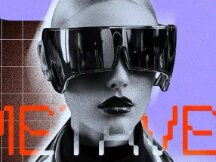Film and TV Industry Metaverse Research Report 2022
introduction
The term "virtual idol" originated in Japan in the 1980s, and early on it split into two major singing groups such as Hatsune Miku and the virtual group A-SOUL created by Rehwa Entertainment. . With the iteration of technology, the virtual idol of the future will be closer to the concept of digital people.
What is a virtual person/virtual idol?
A virtual person is a virtual image with similar characteristics and behaviors that is created using techniques such as modeling, capture or AI and released by the device. The value of human-made virtual design often lies in breaking the boundaries of physical space and providing better understanding, collaboration, and interaction.
There are several ways to divide virtual people. The virtual person is divided into 2D mode and 3D mode according to visual dimension, and the third mode is classified according to design. (seen by users with the naked eye), four types can be classified according to industry standards, and divided into human IP type (KOL type, song and dance type, type), idols created by entertainment companies, avatar stars) and non-IP modes (work modes, techniques and personal modes).
The term "virtual idol" originated in Japan in the 1980s, and early on it split into two major singing groups such as Hatsune Miku and the virtual group A-SOUL created by Rehwa Entertainment. . With the iteration of technology, the virtual idol of the future will be closer to the concept of digital people. The virtual idol story improvement is as follows.

1980s (New Age): Virtual characters entered the real world and virtual idols went from zero to one
Virtual idols can be traced back to Japan, while the technology of making virtual idols is usually done by hand. The virtual idol representatives are Japanese virtual singer Amy Lin and British virtual actor Max Headroom.
Beginning of the 21st century (exploratory aircraft): virtual idols enter the film and television entertainment industry, enter the research phase
In the early 21st century, virtual idols were developed as CG technology and face capture technology gradually changed the art form. Virtual reps at the time included Hatsune Miku, Tianyi Luo, Gollum from "Lord of the Rings", and Caesar from "Rise of the Planet of the Apes". CG technology and face-to-face motion capture technology in this period are not mature enough, and the presentation model is rough, so the virtual market is small and still not accepted by the public.
2016-2019 (beginning): Development of technology, strengthening the use of virtual idols
Since 2016, advancements in intelligence, design, modeling, and face capture have boosted the use of virtual idols. When virtual idol Gian Ai, led by Zhong Zhiren, opened a new type of virtual anchor and transported items to the radio broadcast room, a number of virtual anchors (Vtubers) appeared. Xiaoxi and Xiaotao, UP owners of Bilibili's "Virtual Dimensional Project", also became virtual representatives during this time. Companies such as Bilibili, Sogou, Baidu and BKizunaAI have taken the human route.
2020-present (growth period): The investment process has increased and the economy has grown rapidly.
From 2020, as capitalization grows and technology advances, virtual application design will introduce diversity, intelligence and diversity. Examples: Virtual Internet Celebrity KOL, Featured Avatar Virtual Idol, Virtual Brand Spokesperson, and Virtual Movie Idol, etc. The virtual influencer KOL and fashion, beauty and other forms of collaboration have been popular, and the Brazilian-Spanish girls Miquela Sousa, Chinese AYAYI and Ling Ling have created good commercial value. Virtual Brand Ambassadors support your mission. Examples include KFC's Colonel Sanders and Huaxizi's virtual brand ambassadors. The development of virtual reality has fueled the growth of the film and television industry, including the Red Devils, the Black Army and the Red Army in "Assassination "the people of the Novelist". Due to the popularity from Metaverse, major internet companies such as Tencent, Ali, ByteDance, Xiaohongshu, Douyin and NetEase have used virtual humans as a starting point for their layouts.

Using the technology involves two processes: creating a virtual human and a virtual human user. The creation of a virtual human is divided into two stages, the first stage is to create a static virtual human and the second stage is to bring the virtual human to life. In order to create a virtual human requires the design and production of technology, and to create a living virtual human, it is possible to create a real virtual human using face capture technology, and the use of intelligent technology (AI) and intelligent technology (AI). . There are two ways to use it. We develop algorithm-based virtual humans using text-to-speech technology and CG technology. Finally, we use XR / VR / AR and holographic imaging technologies for user-friendly applications, so that they can achieve powerful immersion, collaboration and interaction while using virtual humans.
What is a Virtual Human Marketplace and Competitive Landscape?
The virtual symbols/virtual idols in China are in the development stage, and the big industry controls the rapid growth. The application of virtual characters in various life situations is increasing, and as people become more fashion conscious, people gradually began to accept virtual people, and virtual industry / virtual idol is growing rapidly. According to iiMedia Research, the main market for Chinese virtual idols in 2020 is 3.46 billion yuan, with a growth rate of 69.3%. From 2021 to 2023, the main market of Chinese virtual idols is estimated at 62.212 billion yuan and 20.52 billion yuan, respectively, with a growth of 79.6% / 94.3% / 69.8%, respectively. By 2020, the idol market size in China is expected to reach 64.56 billion yuan, with a growth rate of 70.3%. From 2021 to 2023, the market size of Chinese idols will increase by 66.5% / 73.6% / 78.7%, respectively, and are estimated at 1074.91866.1 billion 333.47 billion yuan, respectively.
Virtual people can be identified in their industry. Virtual human enterprises can be divided into layer, layer by layer and application layer. The main users of the basic level and the platform level are 2B, and the main users of the application level are 2C.

The core layer is the tool layer, and software and hardware are the foundation of virtual human development. For example, 3D devices such as VR/AR provide users with virtual characters to understand intuition and reality, and design software can create 3D models of the human body and objects that kick people virtual digital. Companies representing the process include Meta, Shadow Design Technology, EPSON, NVIDIA, Collaboration, and EpicGmaes.
The platform layer is the provider of virtual human solutions. Process technologies using technologies such as modeling, modeling and movement to bring virtual people to life and include well-known companies such as Vicon, Tencent, Baidu, Sogou, SenseTime, Chuanghua Technology and iFLYTEK.
The application layer adds "sul" to the virtual human, creates and works on the virtual human creation, and ultimately uses it for a variety of situations. App leaders include Blue Cursor, Mango Supermedia and Next World Culture.
At the competitive level, the virtual human market is still in its infancy and has no leader at all. Well-known companies in the Chinese market include Tianya Henian, Zhongke Shenzhi, Mofa Technology and Chuangyi Technology.
Tianya Henian is the Chinese VOCALOID avatar operator. The company created the Vsinger brand with a virtual singer as its core, and created a variety of non-fiction such as Luo Tianyi, Yanhe, Le Zhengling, Lezheng Longya, Zhengyu Moke, and Mo Qingxian. Tianya Henian introduced Yamaha's VOCALOID audio synthesis technology, which allows users to select songs and use Vsinger's virtual singing voice to create and use songs. On July 12, 2012, Tianya Henian announced China's first VOCALOID audio library software and Chinese character Luo Tianyi. Pianist Lang Lang gave a holographic concert, and on April 17, 2020, Luo Tianyi walked into Li Jiaqi's newsroom.

Zhongke Shenzhi provides solutions for AI digital people, VR space application, integrated cinema and real-time cinema courses with a focus on the whole group of real-time video films and technology in the media. Zhongke Shenzhi provides large-scale spatial positioning technology to a wide range of users, and its domestic products include virtual live broadcast system, optical motion capture system and virtual camera system. Application scenarios for this technology include radio broadcasts, virtual idols, mixed martial arts, large-scale VR experience, classroom animation, and virtual reality design. It provides support services to companies such as CCTV, China UnionPay and Panasonic, as well as leading IPs such as Lee Chan Little Monk and Momojang.
Mofa Technology is focused on developing AI-powered engines for the virtual world. The company announced an end-to-end AI animation animation solution for the whole team and self-developed AI animation animation technology, surreal intelligent attitude, design and linkage technology, a intelligent animation and text-to-speech technology, intelligent interaction to create content, design. Virtual IP and virtual server virtual assistant introduced a variety of configurations and completed Ling Ling virtual Internet virtualization, Ada virtual human and more.
Chuangyi Technology focuses on digital cultural content. The company has hundreds of employees and has three departments: a pre-planning department, mid-level services (renovation, 3D and mixed room) and an operating department. developed by the company.
In addition to startups, large companies such as Alibaba Dharma Academy and NetEase also use virtual humans.
Alibaba Dharma Academy has Machine Intelligence Lab (Vision Lab, Language Technology Lab), Data Computing Lab (Intelligent Computing Lab) and XR Lab, etc., and also carefully supervises hardware platform technology such as VR, AR, XR, etc The metaverse is evolving. Among them, the main research points of XR Lab are 3D models of objects and symbols, focus, human-computer interaction, large-scale map and location, as well as capture and robot control. On the app, the industry-level human eye 3D technology developed by Alibaba Dharma Academy can be used for virtual human realization and to create opportunities for online and offline sharing and live streaming. virtual anchors. Make good interactions by providing feedback from virtual anchors in a timely and accurate manner. The Ali Dharma Institute has also developed AI technology technology, which can recognize the interaction of thousands of people with thousands of faces. When used for virtual human commerce, virtual people can be individual intelligence for different people. . You can. interview.

NetEase's NetEase Qizhi and NetEase Fuxi Lab both work on virtual humans, and NetEase invests in other companies to develop virtual people. NetEase Zhiqi provides state-of-the-art technology to cover real-time audio and video, real-time speech/communication, face-to-face comparison and multitasking applications Includes games, online chats, community chats, virtual cats, and early childhood education. NetEase Fuxi Lab released "Youling" virtual human SDK and "Yaotai" immersive game system. According to Game Grape, 5 of NetEase's 22 investments from 2020 to now are in the virtual human market, and investment companies include Xiaoice, IMVU, Next World Culture, and Shiyue Xingcheng. The main project is that of virtual people. "Xiao Ice", VR social game "IMVU", virtual human animation works and virtual human technology services.
Regarding the overseas giant, NVIDIA announced three fake characters at the GTC2021 conference: Toy-Me, "mini-toy version of Huang Renxun", "egg man" image without facts, and fake images used in chat software. Toy-Me can answer questions about climate change, stars, and biological phenomena.
EpicGames uses Unreal Engine to create digital translators (MetaHumans) in a simpler and easier way. MetaHumanCreator (MHC) is an application designed and created by virtual clients. Unlike face pinch tools, you can skip the data collection steps required by the general program and directly apply hair and face in the kit. Since the data in the library is all from the real and necessary face, MHC can simplify the process of creating virtual people and make them more efficient. Since MHC uses cloud-hosted services, it helps reduce developer hardware resources as it ensures high resolution and performance when there is no high demand for internal computing and computing operations. storage.

A virtual human business model?
In applications, virtual people can be used in film and television, news, sports, finance, culture, education, medicine, shopping and other activities. virtual exhibition, support for large enterprises, educational research and teaching of virtual tours, etc.
There are many ways to recognize misbehavior.
Receive Gifts or Merchandise via Advertising: Virtual Anchors can receive live deliveries and virtual gifts as gifts.
Most virtual steels are still not available, but the virtual head for anchor's head on the head of real people. The 12-year-old country release CEO chen rankors in the past year, up to the shipping bb, as the financial maker in the trailer however, the advertisement in the virtual head for ship ships can reach the announcement of the head. According to the package of the package technology, the number of virtual anchors of the station becomes growing up March 20, 20, and the income of increased advancement gain up to 183%. December 23, 20 21, 7 days of the races are transported to the boat (Sign up and Virtual gift) and today. . The benefits of what to eat with top10 is $ 667 million, respectively.

The number of virtual head anchor fans can reach the actual anchor head. Lingyuan, yousa, and hanser are ranked 51st and 57th respectively, making Station B's Top 100 UP Masters in 2020. As of August 2021, 9 out of 10 virtual fan anchors in Country B have over 1 million fans, and in Speaking of big fans, they can reach 100 UP master fans. In May 2020, virtual idol Luo Tianyi was broadcast across the border to bring gifts. The maximum number of viewers per hour reaches 2.7 million and almost 2 million interact with the rewards. According to Titanium Media, Luo Tianyi's Taobao fit-by is around 900,000 yuan, which is higher than that of sports presenter Luo Yonghao, who recorded the highest price on one of the top carrying anchors. at the same time (Douyin's fit-by is about 600,000 rubles). Girls' virtual A-SOUL leader Bella's single "ShinyDancer" was released at B-station in 24 hours, playing 25.8w, 1.5w words and ranked 5th on B-station's hot list .

Virtual reality: Virtual idols can earn money by performing virtual concerts and singing songs. Virtual concerts can be divided into online and offline. Offline, tickets are sold in cash with advertiser sponsorships, and ticket prices and promotional gifts can be obtained through online and offline advertising. For example, the virtual concert of Galaxy Alice and virtual idol HoloLive Head Gongshi Nao was launched by Ballus in Japan.
Brand Assurance: A type of virtual reality can grow a company's business by promoting its brand. Celebrity avatar virtual idol can get IP license fee and product price. KOL Virtual Influencer can work with skincare, beauty and fashion companies to collect their promotional value. For example, AYAYI has formed partnerships with Guerlain and LV.
Events in Movies and TV Shows: Virtual people can add color to movies and TV shows by participating in a variety of movie tapings and movie appearances. Kia and television production. Now it has been widely used in various shows such as digital singer Ling Qiu in the country's first satellite TV virtual reality show "2060", Red Armored Warrior in "Assassination of Novelist" and virtual host. Mango Supermedia Xiao Yang and Zhong Zhong Xiao Yang are the virtual AI hosts for "Youth Struggle - Special Program for Youth Day, May 4, 2021" Radio and TV.

What is the role of virtual humans in the film and television industry?
Traditional channels in the film and TV content creation industry thrive on actors/stars. First, it is expensive and second, personal behavior can get out of control and can be abandoned. Third, when you're famous, you explode. Leave the company that installed you and install the studio.
For video, as "The report strengthens the production and management of television video and video network" was announced by the National Radio and Television Administration when on February 20, 2020, the total income of each player of each television is theater and network performance may not exceed 40% of total production cost, of which artists' income may not exceed 70% of total income. According to the recommendation of the China Drama Production Industry Association, the production cost of Korean network TV series/films should be controlled within 4 million yuan per segment. According to this calculation, the cost for the top performers is 1.6 million per segment, and the total cost for the performers of the 40 segments is 64 million, which increases the burden on manufacturers and purchases.
A rolling star can lead to big losses for a business. Celebrity flyovers negatively impact visual recognition and simultaneously cause TV shows and several movies to need re-edits by not releasing or replacing actors. . Examples: Tang De's "Winning the World", in which investors spend 500 million yuan, was banned entirely due to interference from Gao Yunxiang and Fan Bingbing, and "Green Hairpin", which invested 300 million yuan, was "Jade" due to interference by Wu Yifan Lovers "and" Top Secret "and" A Chinese Story "were banned by Zheng Shuang.

Celebrities usually leave the company when they are famous and start a studio. For example: Yang Mi, Zhao Liying, Lu Han, and Zhang Yixing started their own businesses after fame.
Virtual humans do not have the above problems, and compared to supporting real idols, virtual idols have the advantage of high plasticity. It is not necessary to create a person who is "different for each person" as a patient, and it is necessary to create images with the person according to the big data of the target and the person to be used. Controllable and deterministic. Virtual idols are available on the platform and the team, there is no risk of personal misconduct, and there is no risk of leaving the platform after graduation. There is no risk of closure. As a rule, it can be printed regularly and can have several companies at the same time.
Discover the IP activities of Disney Animation. IP has been successful for a long time and was decided as a legacy platform. We believe that the future development of virtual humans may cause Disney to focus on global IP operations. According to Statista, 5 of the top 10 IPs in the world are set to be acquired by Disney in 2021. These include Winnie the Pooh with an estimated net worth of $80.3 billion and Mickey Mouse with a net worth estimated at $80.3. With $80.3 billion in revenue, Disney Princess with revenue of $46.4 billion and $35.3 billion to $687 billion, $1 billion in Star Wars and $35.3 billion in the Marvel Universe. Provide intellectual property with history and content, and continuously improve and derive films, games, entertainment venues, cultural and creative products, and the like, to ensure that intellectual property leads to a long life , long-term peace and income as a platform . tool.

Virtual human obstacles?
job. There is no impact on virtual people, but there are problems in the process of "maturation", "popularity" and "realization". For example, Liu Yexi is working on a fake character. With the label "Metaverse", Liu Yexi announced her first video on Douyin on October 31, 2021 and explored for gold. The number of likes exceeded 3 million and the number of fans exceeded 2.3 million in 3 days. . . . Liu Yexi is the first IP metaverse of the entire network, and his work deals with a mixture of virtual people and related topics.
crack length. Virtual idols in the past have become more popular in 2D and will be extended to 3D in the future. We can see that Liu Yexi has dismantled the concept of a virtual human which is no different from a real person and is well received by ordinary users.
For humans to integrate the virtual human into real life, the image of the virtual human must be visible to the human eye. Therefore, face-to-face capture technology, graphics rendering technology, modeling, voice technology, AI technology, and CG technology.
Since the configuration of virtual human IP is one of the main reasons that people can easily accept, the configuration and functionality of virtual human IP must be unique and popular. For example, behavioral disorders, behaviors, developmental environment, educational background, work history, etc. For example, Xiao Tao, a proof of station B, for example, Xiao Tao looks like a 15-year-old girl with red hair, two ponytails and red red eyes, dressed in black and white, she has a variety of styling. behavior, and the fan in his head will change the attitude of the fan speed. For example, if the fan is not spinning at all, it looks dull, when the fan is spinning low, it looks crisp and crisp, and when the fan is spinning at high speed, it looks sticky. the black boat.

As the distribution of virtual people expands with the production and exploitation of virtual people, people will be able to accept virtual people more easily. Currently, the application of virtual humans is in its early stages, and humans are beginning to have a preliminary understanding of virtual humans. As virtual people are increasingly used in social media, KOL influencer, film and TV production, media, online chat and marketing, virtual people can access human life more easily and people can have a better understanding of virtual people. comprehension. You will gradually accept the feeling that fake people are present in your life. Example: Breath of Life - Xiao Yang.
From an ROI point of view, supporting real idols is a temporary benefit. The virtual business is not yet mature, and the cost of creating virtual idols of different types, technologies or "quality" varies. Video production and post-production are the core of the investment link, at the expense of Liu Yexi's recent "off-cycle" short video platform in the process developed by Chuangyi Video. Liang Zikang, founder and CEO of Chuangyi Video, said the production cost was "not as high as a million dollars", but the truth is very high.
According to Titanium Media, the production cost of a virtual idol is about 2 million yuan, the concert covers 10 performances, including planning, modeling and imagination. The cost of production, capture, planning phase, CG production, etc. is 20 million yuan. Take Luo Tianyi as an example, the concert was held at Mercedes-Benz Center in June 2017. According to Cao Pu, Chairman Tianya Henian, “The company spent more than $20 million to complete the film. In terms of revenue, Luo Tianyi's concert revenue comes from sponsorships, tickets, and external equipment. The 2017 concert proceeds are expected to cover the cost of the show, with ticket sales of 7,000 and an average of 500 yuan per ticket, ticket revenue is about 3.5 million yuan. In addition, hosting a concert is beneficial by strengthening Rakuten's IP design and allowing the virtual idol to access our appearance, which means that their independent work is more than just a result.
Due to the mature working model and commercial monetization, the actual cost of idol support is lower. Let's take Korean idol SM as an example. SM is one of the best companies in the world. The first is the selection stage, where young people between the ages of 10 and 22 are explored through holiday writing, SM competition for young people and other activities, artistic exploration, self-reference and vice versa, and the pass value for this phase is close to 1:800.

Upon entry into the training phase, 3 to 10 years of training are required, and students are excluded from the list of weekly and monthly tests. At this point the output up to 50%. At the monetization stage, the revenue model is realized, generating revenue from singles, albums, concerts, member value-added and peripheral merchandise, television entertainment programs, theaters, commercial enterprises, etc. won directly from side C. side B.
Back in China, the company's annual tuition is expected to exceed 1 million yuan. Large companies can train 12 or more employees simultaneously. The average duration of studies is two and a half years, and the total cost is over 30 million yuan. According to Lehua Entertainment, a security company formed by famous Korean idols, it would cost at least $40-50 million to form a group.
Although the return on investment of virtual idols is lower than that of real idols in the short term, the virtual reality industry is committed to the development of technology, which is the result of major problems, and the high demand for virtual humans to the metaverse era, and the line between the two will become blurred, real idols will create virtual images of themselves, and virtual idols will make them more "real". For example, at the end of 2020, Lehua Entertainment announced "A-SOUL", a virtual idol group consisting of five girls with different images and personalities. Plus the number of fans across the network within months of their event. 3 million. According to B-station data, the average playback volume of music broadcast by A-SOUL on B-station can reach more than 500,000. As a virtual reality company, Lehua Entertainment has invested in ByteDance.

Scan QR code with WeChat






























